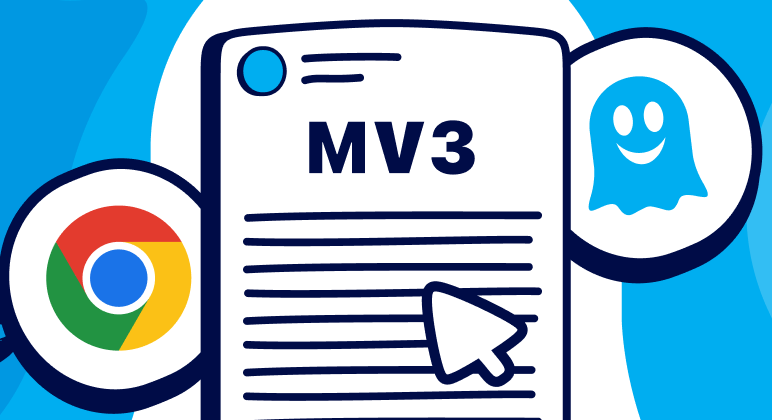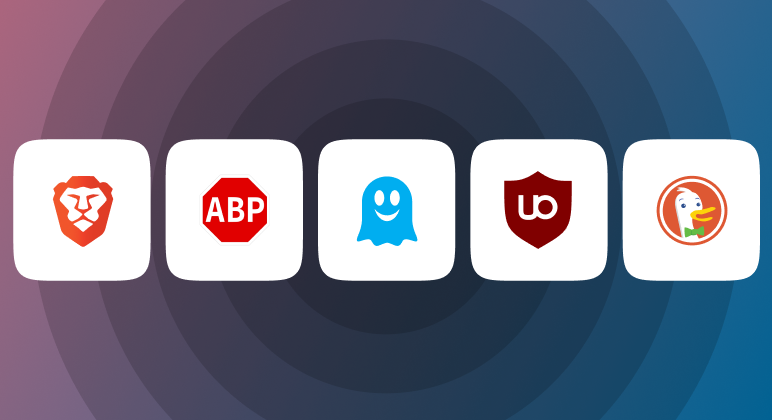WhoTracks.Me
What Are Trackers?
Key Points:
- Trackers are companies that collect information about users as they browse the web, using scripts or pixels inserted by publishers or advertisers.
- Tracker profiling is the process of linking data from different sites to build user profiles based on browsing history, and selling them to third parties for targeted advertising.
- Privacy tools like Ghostery help users identify and block trackers, and protect their online privacy.
What Is a Tracker?
A tracker is a company which collects information about you as you browse the web. Internet tracking scripts and tracking pixels are inserted into the websites you visit by publishers or advertising networks, usually in exchange for some service that the tracking company provides.
Suggested reading: If you want to find out more about internet trackers, check out our blog What is tracking and how can I browse safely?
What Is Tracker Profiling?
Trackers use identifier tools to link information about you from different sites. This data is used to build up a user profile, based on your browsing history.
Tracker profiling places users in groups and sells data to third parties so they can target certain users online.
We define a tracker as a third-party domain which is:
- present on multiple (> 10) different websites with a significant combined traffic
- uses cookies or fingerprinting methods in order to transmit user identifiers
Why Do Trackers Exist?
- Targeted Advertising & Monetization: Advertising is one of the biggest reasons trackers exist. They follow browsing behavior to build profiles and serve personalized ads, helping websites generate revenue.
- User Profiling & Privacy Concerns: Trackers collect vast amounts of behavioral data to create detailed user profiles, often without explicit consent. The scope and use of this data are typically buried in long, unread privacy policies.
- Analytics & Site Optimization: Website owners use trackers to understand how visitors navigate their sites. This data is used to improve layout, content, and overall usability.
- Service Providers for Publishers: Many third-party services, like analytics, affiliate platforms, or ad networks require publishers to embed trackers (e.g. scripts or pixels) to function.
- Conversion Tracking: Even websites that don’t serve ads may track user actions like purchases or sign-ups to measure campaign success and improve their marketing strategies.
- Social Media Integration: Embedded features such as share buttons or comment sections often include trackers from platforms like Facebook or X (formerly Twitter) to connect on-site activity to user identities.
- Search Engine Tracking: Major search engines use tracking to personalize results and ads based on your history. Switching to a private search engine reduces this data exposure.
- Transparency and User Control: Most users have little visibility into who’s tracking them or why. Privacy-focused tools like Ghostery aim to put control back into users’ hands, promoting a more balanced digital ecosystem.
What Are Trackers Used For?
There are many different use-cases for these services, such as:
- Analytics: Used to measure how many people are visiting the site, where from, etc. e.g. Google Analytics.
- Advertising: Provides advertising on sites in order to monetize visits. e.g. DoubleClick and Outbrain.
- Conversion tracking: Advertising trackers can also appear on sites without ads. This is usually to measure conversions or to improve the targeting of the publisher’s ads elsewhere on the web.
- Social Media: Integration with social networks. e.g. Facebook like button.
- Content Delivery Networks (CDN): Networks which provide high bandwidth content like videos and images. e.g. Youtube and Cloudflare.
- Comments: Embedded comment systems allow users to comment on articles. e.g. Disqus.
- Customer interaction: Live chat and support widgets. e.g. LivePerson.
Many of these use cases do not require tracking. However, they may track your behavior by accident because the implementation is easier, or on purpose because the data generated can be used to increase revenue.
What’s The Problem With Tracking?
Web trackers use user identifiers to group data received from each unique user, and browsers send the URL of the first-party page to third-party resources in the page as standard.
This means trackers are effectively able to collect a subset of users' browsing history. Even if this history is linked to an 'anonymous' identifier, any browsing history of reasonable length can be de-anonymised to find the user behind it.
Top Ways To Stop Being Tracked Online
You don’t have to accept tracking as the price of using the web. Here are 12 effective, privacy-first steps to help you stay protected:
-
Use an anti-tracking browser
Switch to a privacy-first browser like the Brave Browser, which blocks trackers, ads, and fingerprinting by default. It includes built-in tracker protection and offers private search. -
Install an anti-tracking extension
Add trusted privacy tools like Ghostery Tracker & Ad Blocker, uBlock Origin, or Privacy Badger to block ads, analytics scripts, and other hidden trackers. -
Use a private search engine
Opt for search engines such as Ghostery Private Search or DuckDuckGo, which don’t track your click behavior or offer personalized search results. -
Clear private data regularly
Delete cookies, cache, and browsing history after each session to reduce your online footprint, especially on shared devices. -
Enable Do Not Track (DNT)
Activate the DNT setting in your browser to signal websites that you don’t want to be tracked. While not universally respected, it’s still worth enabling. -
Use a VPN to hide your IP
A VPN encrypts your connection and hides your location, making it harder to link your activity across sites, though mindful that it doesn’t block trackers on its own. -
Avoid using Facebook or Google to log in
Creating new logins with unique passwords helps prevent cross-site profiling linked to single sign-on (SSO) buttons. -
Create separate browser profiles
Isolate your digital life (e.g. work, social, shopping) by using different browser profiles or dedicated browsers for each purpose. -
Use Tor for anonymous browsing
The Tor Browser hides your identity by routing traffic through multiple encrypted relays, ideal for high-privacy use cases. -
Stay alert on public Wi-Fi
Don’t log in to sensitive accounts over unsecured networks. Use a VPN, only visit HTTPS sites, and log out when finished. -
Switch from mobile apps to browser versions
Apps often collect more personal data than their web equivalents. Use mobile browsers instead, paired with a tracker blockers like Ghostery for better privacy. -
Block cookie pop-ups and consent requests
Tools like Ghostery’s Never-Consent automatically deny tracking cookies and skip annoying banners, so you don’t have to.
Creating greater transparency around internet tracking
In the majority of cases, trackers are invisible on the pages they appear. This means there is little or no transparency about who is logging activity on a site, or how to block targeted advertising, hence the need for privacy tools such as Ghostery to call them out.

